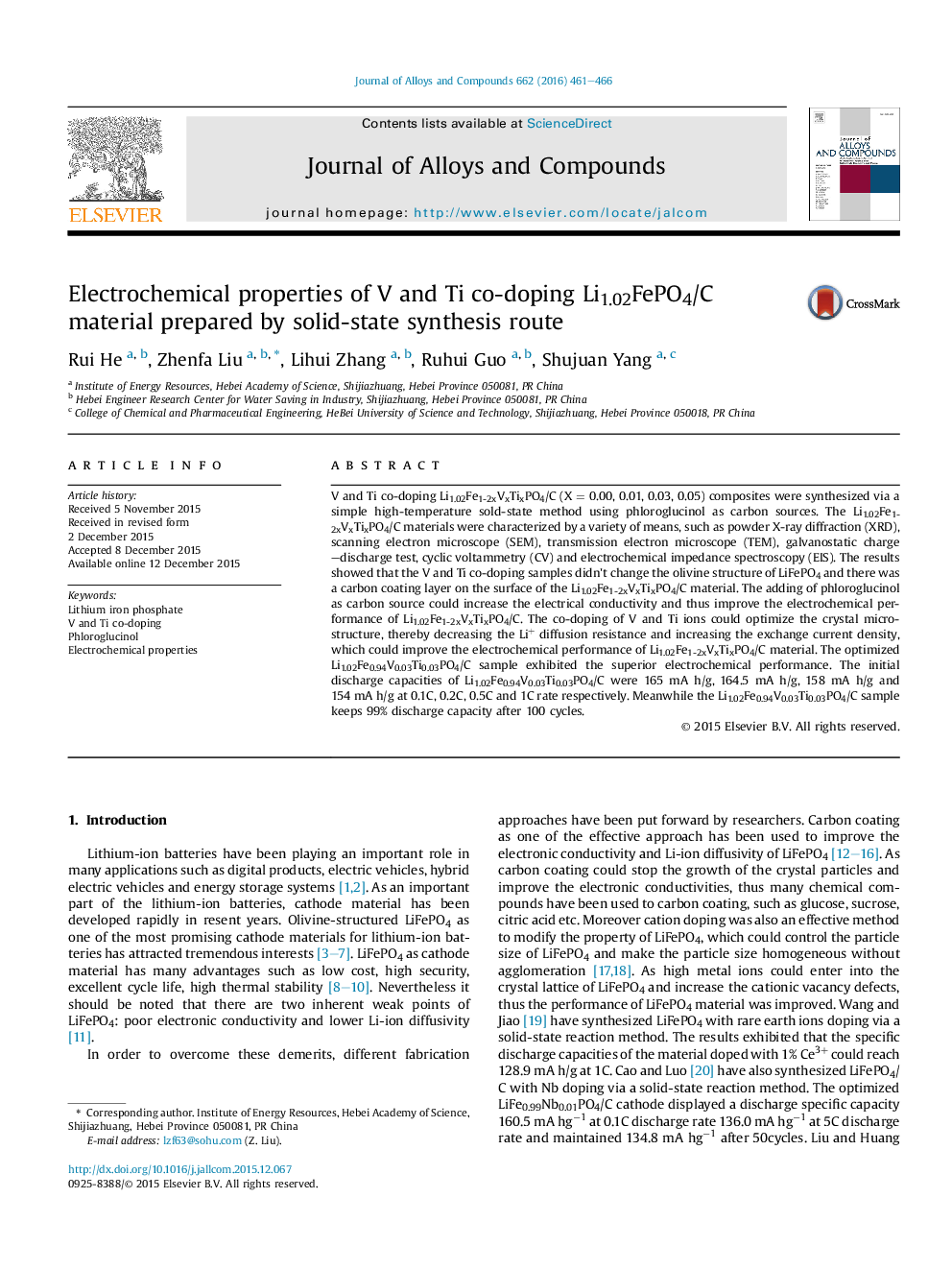| Article ID | Journal | Published Year | Pages | File Type |
|---|---|---|---|---|
| 1606675 | Journal of Alloys and Compounds | 2016 | 6 Pages |
Abstract
V and Ti co-doping Li1.02Fe1-2xVxTixPO4/C (XÂ =Â 0.00, 0.01, 0.03, 0.05) composites were synthesized via a simple high-temperature sold-state method using phloroglucinol as carbon sources. The Li1.02Fe1-2xVxTixPO4/C materials were characterized by a variety of means, such as powder X-ray diffraction (XRD), scanning electron microscope (SEM), transmission electron microscope (TEM), galvanostatic charge-discharge test, cyclic voltammetry (CV) and electrochemical impedance spectroscopy (EIS). The results showed that the V and Ti co-doping samples didn't change the olivine structure of LiFePO4 and there was a carbon coating layer on the surface of the Li1.02Fe1-2xVxTixPO4/C material. The adding of phloroglucinol as carbon source could increase the electrical conductivity and thus improve the electrochemical performance of Li1.02Fe1-2xVxTixPO4/C. The co-doping of V and Ti ions could optimize the crystal microstructure, thereby decreasing the Li+ diffusion resistance and increasing the exchange current density, which could improve the electrochemical performance of Li1.02Fe1-2xVxTixPO4/C material. The optimized Li1.02Fe0.94V0.03Ti0.03PO4/C sample exhibited the superior electrochemical performance. The initial discharge capacities of Li1.02Fe0.94V0.03Ti0.03PO4/C were 165Â mAÂ h/g, 164.5Â mAÂ h/g, 158Â mAÂ h/g and 154Â mAÂ h/g at 0.1C, 0.2C, 0.5C and 1C rate respectively. Meanwhile the Li1.02Fe0.94V0.03Ti0.03PO4/C sample keeps 99% discharge capacity after 100 cycles.
Related Topics
Physical Sciences and Engineering
Materials Science
Metals and Alloys
Authors
Rui He, Zhenfa Liu, Lihui Zhang, Ruhui Guo, Shujuan Yang,
